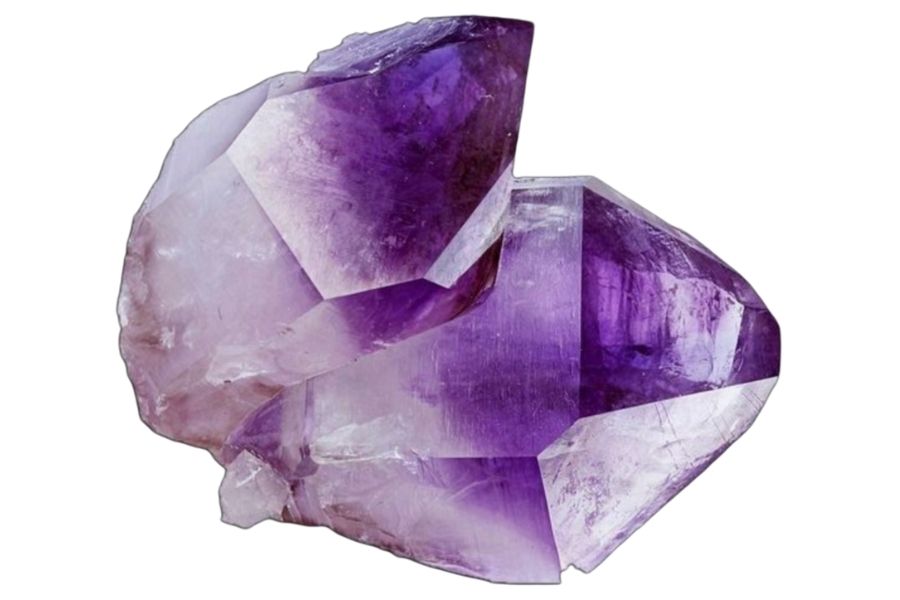Gem mining in Minnesota is a popular pastime for adults and children. It can be an exciting adventure, from finding beautiful agates to uncovering quartz crystals. With the state’s diverse geology, you can find amazing gems and precious stones with the right tools and patience.
This article will cover the best locations in the state to go gem hunting. Whether you’re a casual collector or a serious gem hunter, there is something for everyone. So grab your tools and explore the beauty of the state’s hidden gems!
- The extensive local experience and understanding of our team
- Input from several gem hunting groups and organizations
- The accessibility of the mining locations
- Safety and potential hazards when collecting
- Private and public locations
- A desire to include locations for both experienced gem hunters and those who are just starting out
Overall we’ve been able to put together a great list that anyone can use to locate a lot of beautiful gems.
The Gemstones Found In Minnesota You Can Find
These are some of the incredible gems that are found right here in Minnesota and a few spots worth looking for them at:
Amethyst
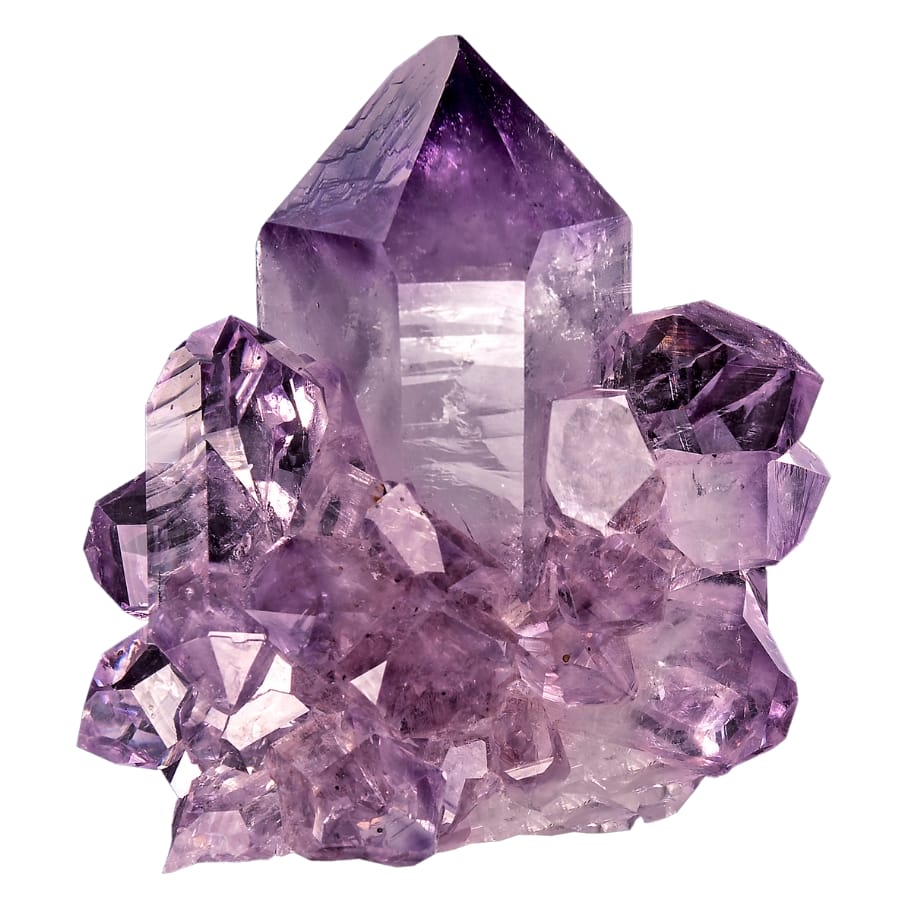
Your eyes will be drawn to the beautiful purple amethyst. Merely because it’s purple, amethyst stands out from other minerals that are made of quartz.
Stones like quartz contain small amounts of iron, which gives them a color range from light purple to deep violet. Which part is the best? You can find it in the northeast, especially near Lake Superior.
Many gem lovers like to visit this place because it has large, high-quality amethysts. It’s pretty interesting to see how it forms. It usually takes place deep underground, where hot water full of minerals runs through rock cracks.
This water cools down over millions of years, and the chemicals form crystals. With amethyst, the clear quartz changes into the beautiful purple stone we see when iron and the right amount of heat are present.
Most of the state’s amethyst layers were made a long time ago, when volcanoes were still ruling the area. The past of volcanoes made the ideal conditions for amethyst to form.
There are many reasons why people value amethyst. Gemstones like this are often used to make bracelets and rings because of their beautiful purple color.
Gemologists and people who like to collect it find it fascinating because each one can reveal something new about the history of the earth and the conditions that made it.
Where you can find Amethyst in Minnesota
These locations in the state are good places to look for them:
- Get Pickin
- Gooseberry Falls State Park
- West Central Rockhounds
Chalcedony
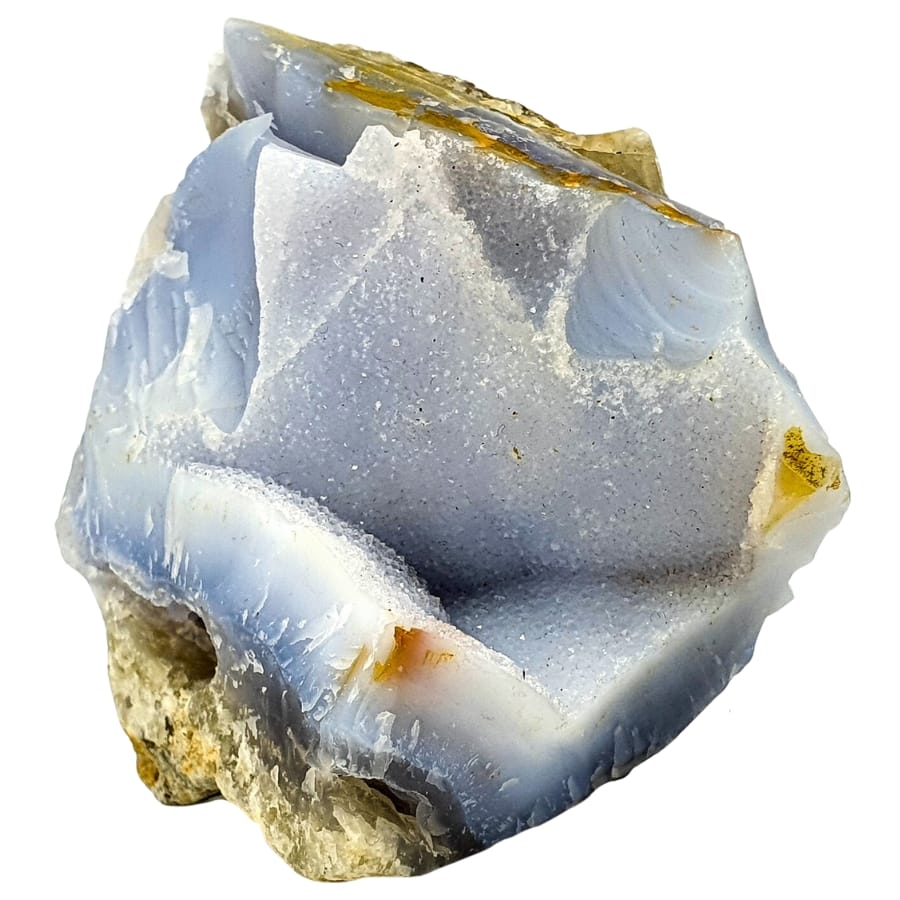
Although chalcedony is a type of quartz and is made of silicon dioxide, its shape is what makes it unique. As opposed to normal quartz, which is clear and solid, this one has very small crystals that make it look waxy and almost smooth.
Some types of chalcedony are brightly colored agates and milky white and blue colors. There are agates all over the state, but the ones with the deep red, orange, and white bands are especially common near Lake Superior.
Chalcedony is valuable for many reasons. It’s often used to make necklaces and earrings because it comes in a lot of pretty colors and shapes.
For geologists and rock collectors, it’s especially interesting when it comes in the form of agates. This is because each piece can tell you a lot about the geological past of the place where it was found.
Where you can find Chalcedony in Minnesota
There are many chalcedony specimens in the state, but these are the best places to find them:
- Cuyuna Range
- Osseo
- Portsmouth Mine
- Vermillion Range
Garnet
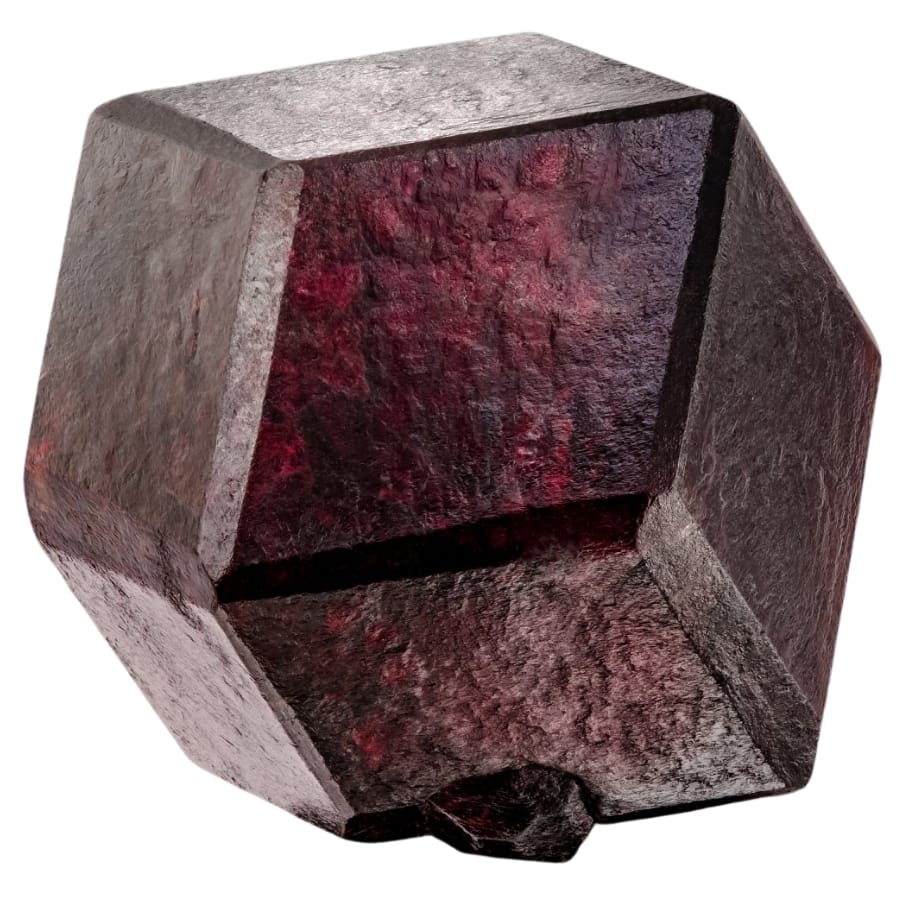
Garnet is made up of more than one element. While these minerals have similar crystal structures and traits, they come in various colors, from red to orange to purple. But when most people think of garnet, they picture a deep, rich red color.
Garnets are usually found in the northeastern state, often hidden in metamorphic rocks like schist and gneiss. These garnets aren’t typically the large, gem-quality stones you might find in a jewelry store, but they’re still elegant to look at and study.
There are several reasons why people value garnets. To begin with, they look lovely! People love to use deep red garnets to make jewelry like rings and chains. Also, garnets are the birthstones for January, so they make a great gift for people born that month.
Where you can find Garnet in Minnesota
Although you can find garnet all over Minnesota, most of them are found in the following places:
- Blanchard Dam
- Elk Creek
- Little Falls
Jasper
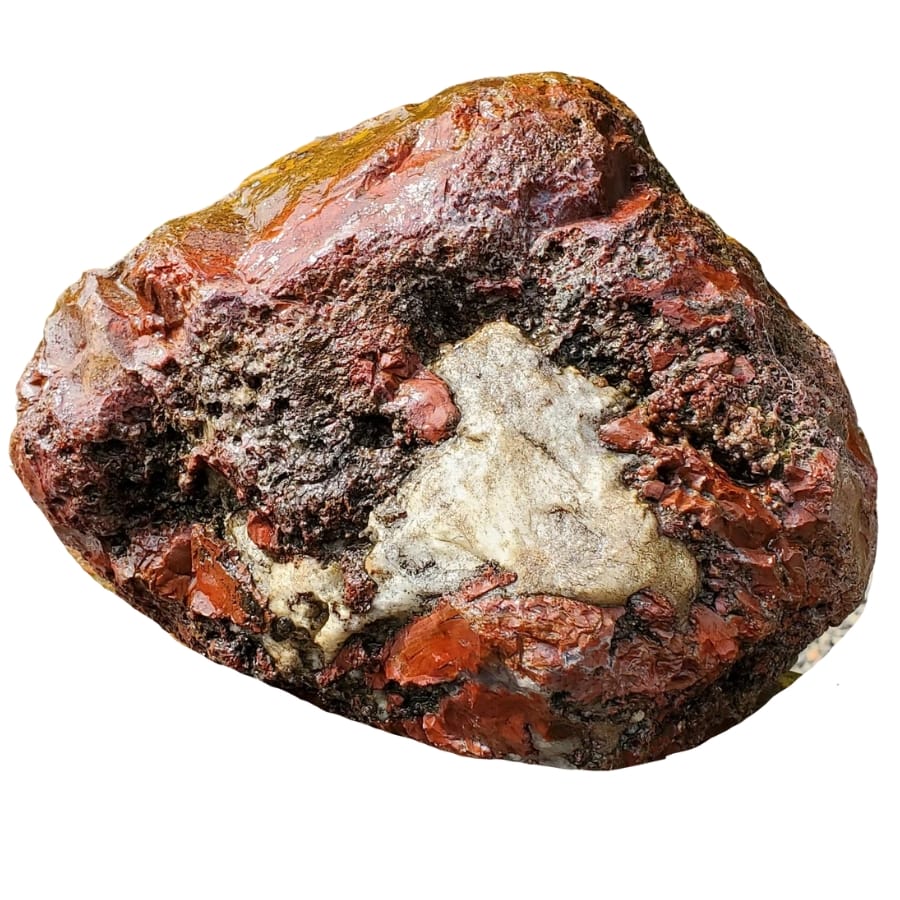
Because of its unique colors and patterns, jasper is a very cool rock that is a type of quartz. The different colors of jasper, including red, yellow, brown, and green, make it look like earth.
Unlike clear quartz, which you can see right through, jasper is opaque. Where the rocks are mixed with the quartz often determines the color.
Another exciting thing about jasper is how it forms. Water full of silica flows through rocks and dirt to start the process. The moving water picks up Small bits of minerals and leaves behind in cracks and holes in the ground over time.
These rock layers gradually change into jasper over time and under much pressure. For a very long time, people have valued jasper. It’s often used for jewelry and home art because of its pretty colors and patterns.
Where you can find Jasper in Minnesota
In Minnesota, you can find most of the jasper in these places:
- Acro Mine Lake
- Charles Lindbergh State Park
- Get Pickin
- Osseo
- Pigeon Point
Labradorite
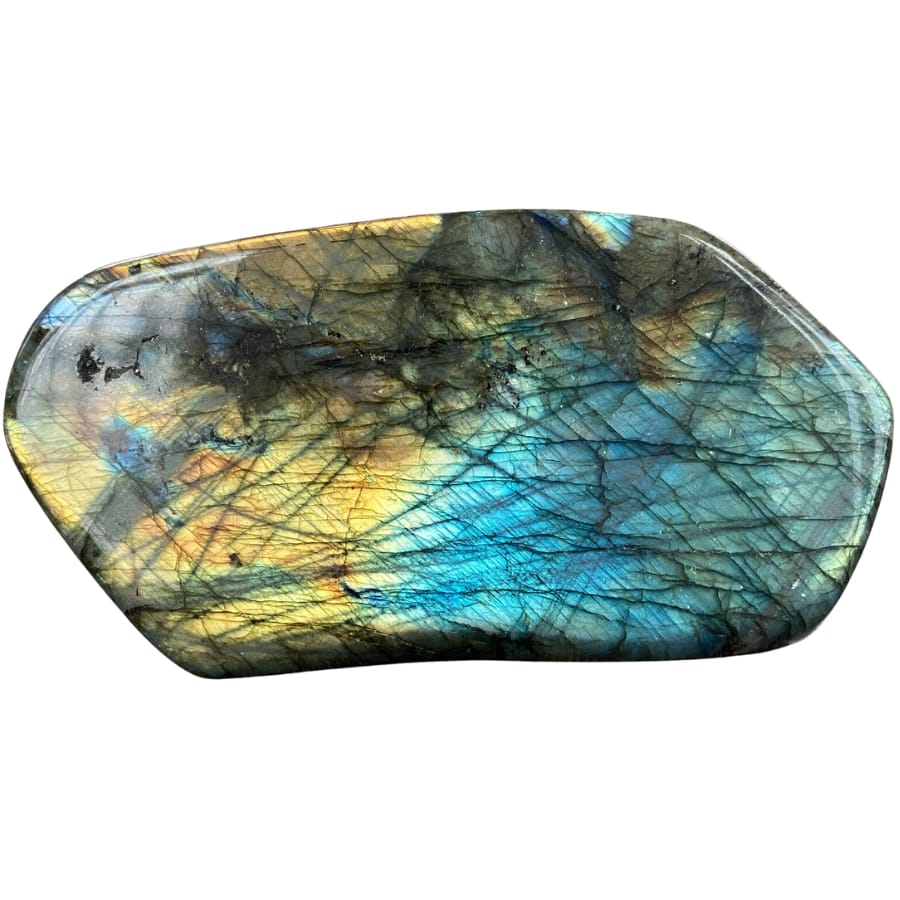
The mineral labradorite is one of a kind and very attractive. It stands out because it can show an amazing play of colors. This is called labradorescence.
If the light hits the stone correctly, it can show blues, greens, oranges, and even reds. Imagine a rainbow stuck inside a rock!
If the right amount of sodium, calcium, silicon, and aluminum combine correctly, they can form labradorite. It can show those beautiful colors when light shines on it because of the unique way these elements are grouped.
There are several reasons why people value labradorite. Its beautiful colors make it a popular choice for jewelry and home art. When polished and shaped into necklaces or ornaments, it really stands out.
Where you can find Labradorite in Minnesota
Labradorite can be found all over Minnesota, but mostly in these spots:
- West Central Rockhounds
Marcasite
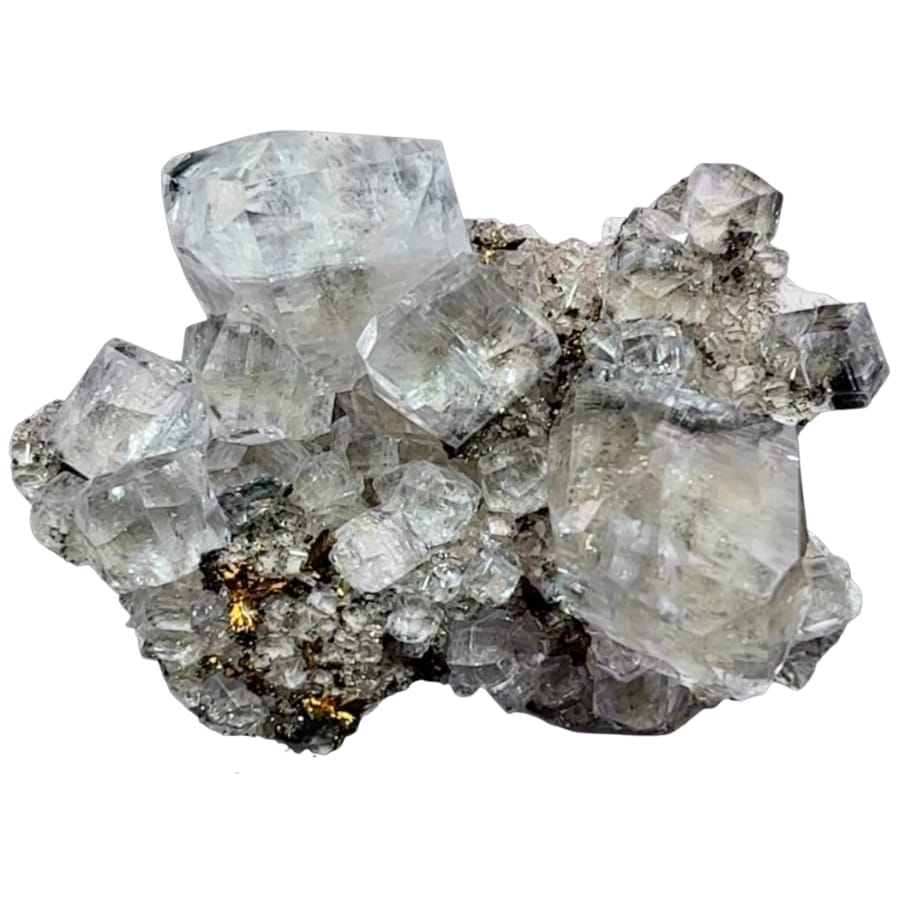
People often mix up marcasite with pyrite, which is also called “fool’s gold,” but they are not the same thing at all. Like pyrite, marcasite looks silvery and shiny but is lighter in color and usually has a pale brass-yellow tint.
It’s not the most common material in Minnesota, but marcasite can be found in some places, especially where there are limestone and shale deposits. It doesn’t usually form big, clear crystals. Instead, it forms smaller, less solid structures.
This mineral usually forms up in sedimentary rocks like shale and limestone. It’s made when iron sulfide reacts with other minerals in water. This process can happen in many places, like near the ocean floor or in places with hot springs.
There are several reasons why people like marcasite. First, it’s a nice material to collect because of its unique metallic sheen and crystal formations. In jewelry, it’s often cut and set into silver to give it an old-fashioned look.
Where you can find Marcasite in Minnesota
Marcasite is easy to find in these places:
- Bronk Quarry
Quartz
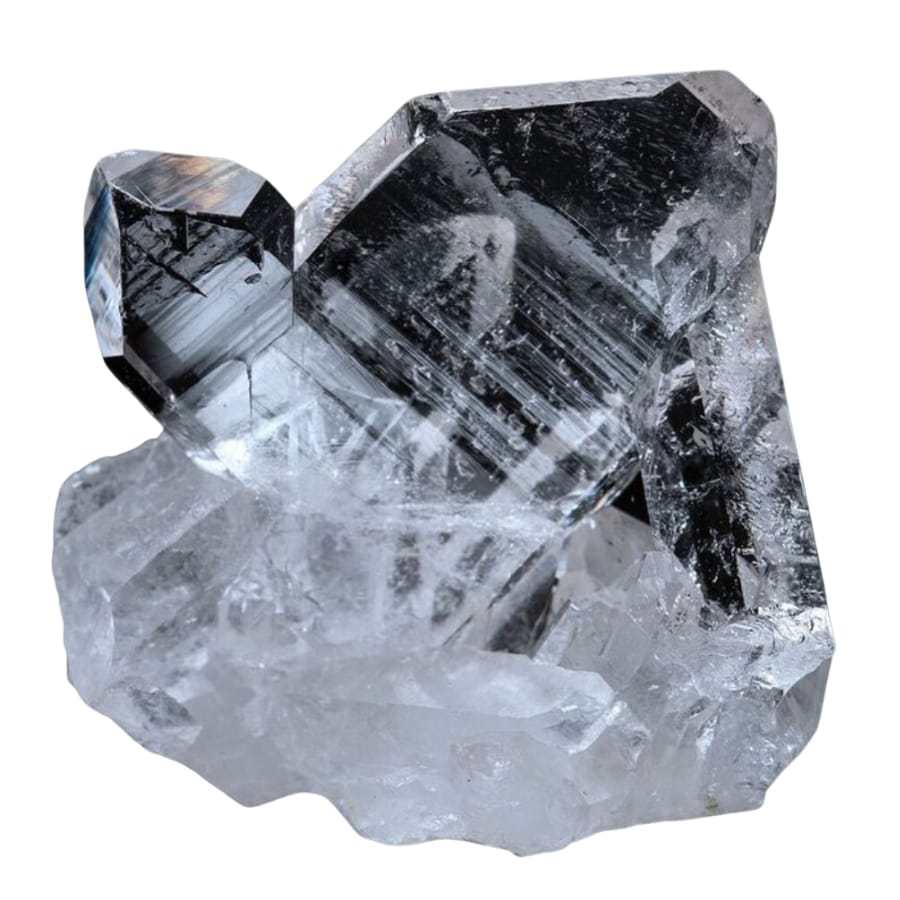
Quartz is one of the most common and well-known gemstones in the world. It comes in a lot of pretty cool shapes and colors. A more formal term for it is silicon dioxide, which is silicon and oxygen.
It can be clear and sparkly, or it can be different colors, like black (smoky quartz), pink (rose quartz), or even purple (amethyst).
It can form in many ways, but most of the time it does so when hot water full of minerals moves through cracks and spaces in rocks deep underground. The water is cooling down, and quartz is forming crystals in it.
Some places on Earth’s crust are cooler than the surface where this can happen, like near volcanoes. The crystals mixed in with the silicon dioxide as it forms can give quartz its different colors and features.
Quartz has been valued for a long time, and not just because it looks nice. Because it’s so pretty and unique, it’s used often in jewelry and home decor. But it’s also very important in technology.
It’s beneficial in electronics like watches and radios because it can change mechanical pressure into electricity and electricity into mechanical pressure.
Where you can find Quartz in Minnesota
You can find quartz in the following areas in the state:
- Charles Lindbergh State Park
- Gunflint Trail
- Vermillion Range
The Crystals Found In Minnesota
Crystals and gems lovers will find a lot of beautiful ones in Minnesota. People often talk about these rocks.
Additionally, you can read our piece about the spots in Minesota where you can find crystals:
Crystals and gems lovers will find a lot of beautiful ones in Minnesota. People often talk about these rocks.
Additionally, you can read our piece about the spots in Minesota where you can find crystals:
Fluorite
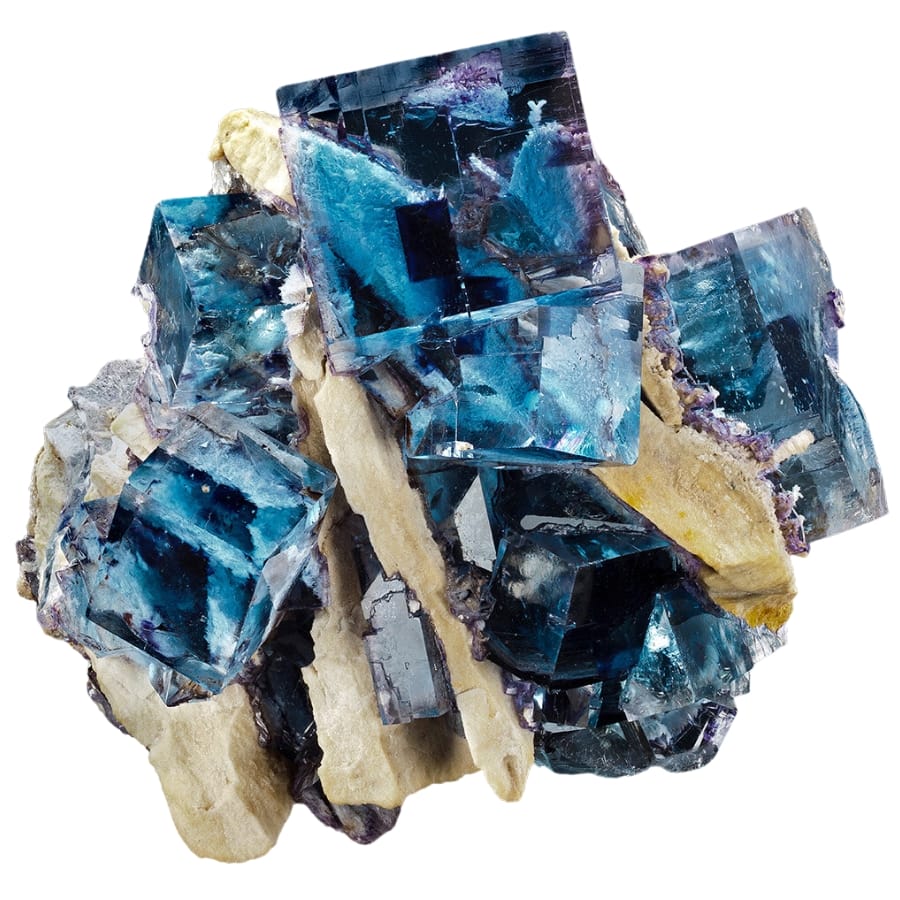
Fluorite is a cool mineral known for its beautiful, smooth crystals and wide range of colors. It comes in almost every color, from clear to blue to purple and green. It’s made up of calcium fluoride.
Deep below the Earth’s surface, it generally forms where hot, mineral-rich water flows through rock cracks. The water is starting to turn into fluorite crystals as it cools down.
Different rocks mixed with fluorite give it different colors. It can be purple with a small amount of iron, but it can also be blue, green, or even yellow with other elements.
Fluorite has always been interesting to people because it’s so pretty. When polished and cut into different shapes, it’s often used to make jewelry and home art.
In addition to being beautiful, fluorite is also very helpful. Many chemical products, including steel and hydrofluoric acid, are made with it.
Where you can find Fluorite in Minnesota
The following places in Minnesota are great places to find fluorite:
- West Central Rockhounds
Galena
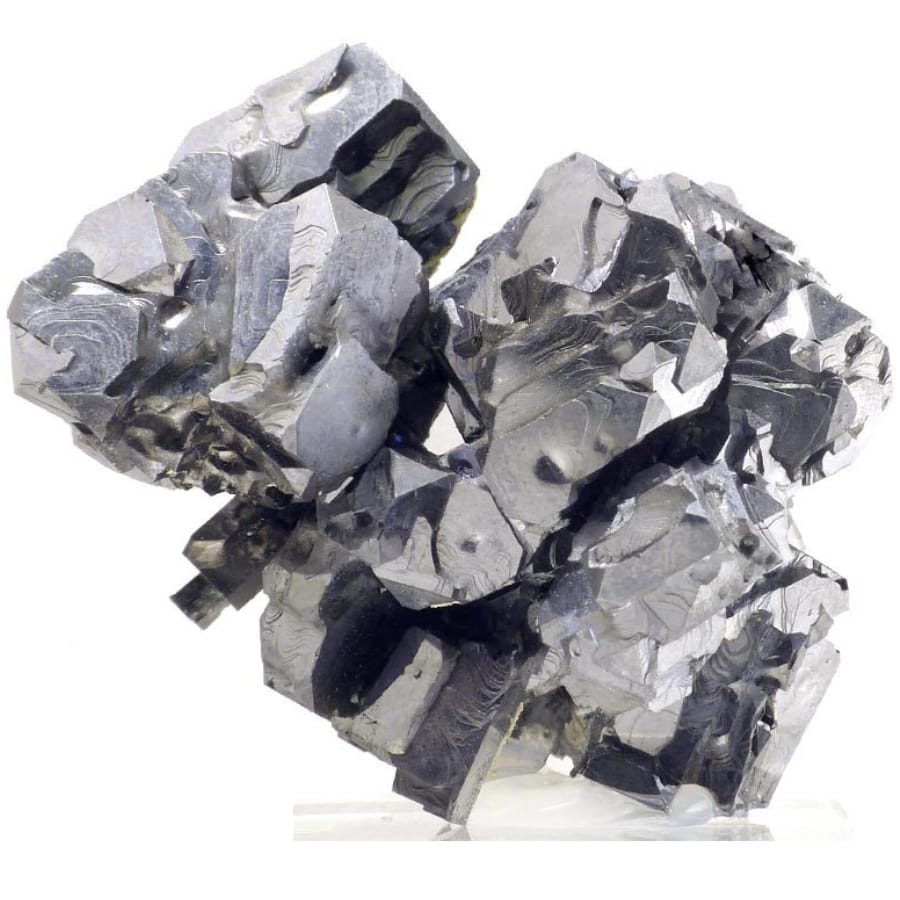
Galena is a very interesting material that gives us lead. A very heavy item for its size, it has a shiny, glossy gray color that is very different from other things. It makes crystals that look like cubes and can look really cool and geometric.
It’s formed in a process that takes place deep underground. Most of the time, it forms in sedimentary rocks like limestone or in volcanic rocks where hot water flows through channels.
Galena typically gets its lead from other minerals breaking down in the rock around it. These minerals are then mixed into the galena as it forms.
It has been valuable for a long time because they contain much lead. Many things, like batteries, bullets, and even paint and gasoline used to contain lead.
But now that we know it can be dangerous, we don’t use lead for these things as much. In addition to its useful properties, galena is a favorite among mineral fans because of its cool crystal shapes and metallic shine.
Where you can find Galena in Minnesota
Galena can be found in the southeastern part of Minnesota, especially where there are limestone rocks.
Hematite
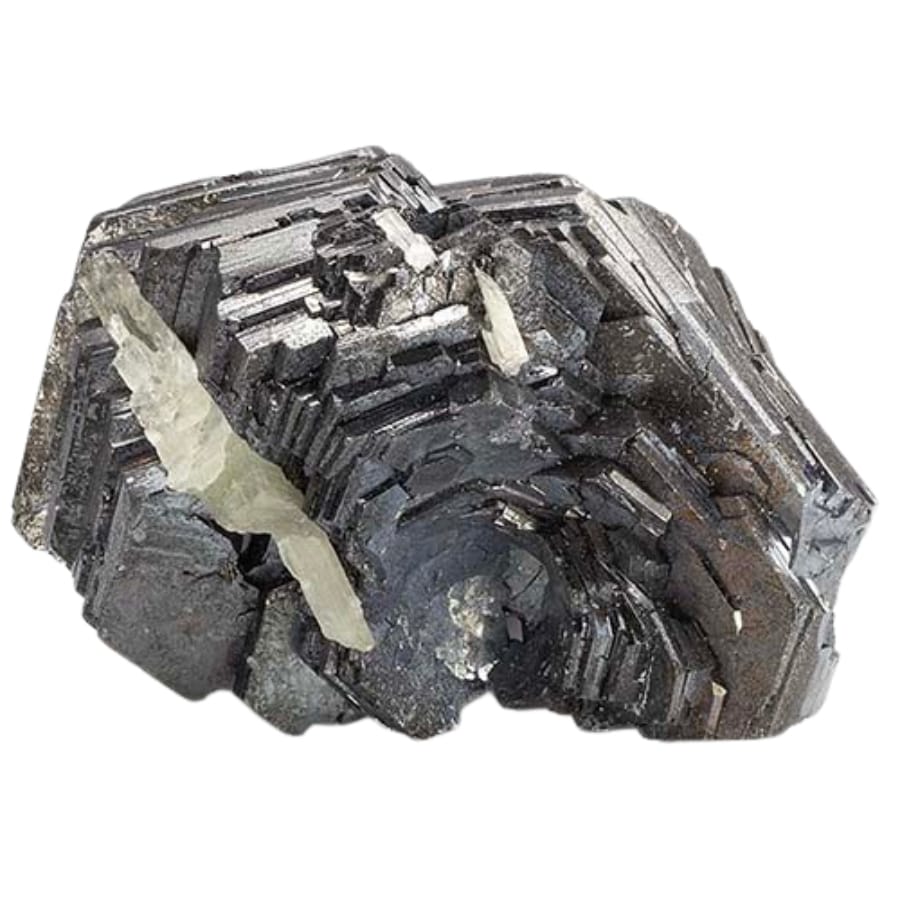
Hematite is a cool material that is very important: it’s one of the main places where iron comes from. The glossy shine is very unique, and the colors range from steel gray to almost black.
It can even be a little red, which is how it got its name: hematite comes from the Greek word for blood.
Hematite can form in many ways, but most of it is made when iron in water turns into minerals. It can form when iron minerals from the Earth’s surface dissolve in still water, like lakes and seas. The iron minerals then mix with oxygen and form crystals.
Hematite is valuable, mostly because it contains iron. Everything from building steel and car steel to everyday things like tools and machines needs iron.
But hematite is valued for more than just its usefulness. It’s often used in jewelry and as a paint color. It was even used to make red ochre, used in art and decoration.
Where you can find Hematite in Minnesota
Hematite is very special in Minnesota because the state has some of the biggest iron reserves in the US.
Hematite is found in large amounts in these layers, especially in the Iron Range area in northeastern Minnesota. This makes the area historically important for iron mining.
Pyrite
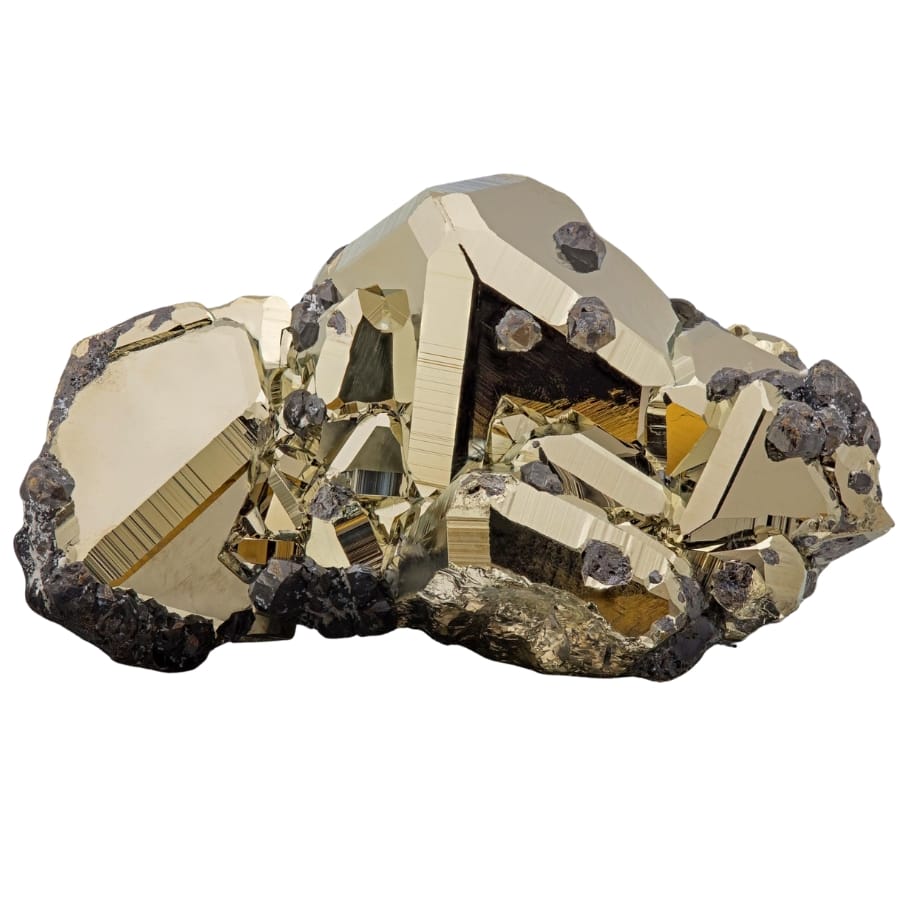
A mineral called pyrite, which is often called “fool’s gold,” is known for making people think it’s real gold without being real. Since it’s bright and shiny, it’s actually iron sulfide.
Iron and sulfur generally combine in certain rocks, like sedimentary rocks (like shale) or igneous rocks (like granite). Such factors might include high pressure or the presence of other elements and minerals.
Surprisingly, pyrite can form when bacteria in water or dirt use sulfur in their processes. From deep underground to the bottoms of lakes and seas, this process can happen anywhere.
Different people have different reasons for wanting pyrite. Actually, it’s not real gold, but it’s still pretty cool. Being shiny and silvery, it’s used in jewelry and as a decoration stone.
A fascinating fact is that pyrite can be used to make sulfur and sulfuric acid, which are essential for many commercial processes. That’s why, even though it’s called “fool’s gold,” pyrite is extremely useful and significant.
Where you can find Pyrite in Minnesota
You can find pyrite in these locations:
- Bronk Quarry
- Carlton County
- Pigeon Point
- Quarry Hill Nature Center
Calcite

The crystal calcite can be found all over Minnesota. It’s mostly composed of calcium carbonate, which is also found in eggshells and chalk. There are many calcite shades, from clear and white to pink and even blue.
It’s fascinating that the rocks around it can change how it looks when it forms. Because of this, Calcite can come in many different sizes and forms. It even glows under UV light sometimes!
It usually forms when calcium carbonate-filled water gets into rocks through cracks. The calcite is left behind when this water disappears over time. It’s found in rocks along Lake Superior and in old mines in Minnesota, mostly in the northern part of the state.
Several things make calcite valuable. It’s used to make cement and lime, essential for building things. It’s also used in farming to keep the land healthy. Many people adore it because it comes in many colors and shapes.
Where you can find Calcite in Minnesota
Calcite can be found all over the state. Here are some of the places:
- Bronk Quarry
- Quarry Hill Nature Center
- West Central Rockhounds
Chalcopyrite
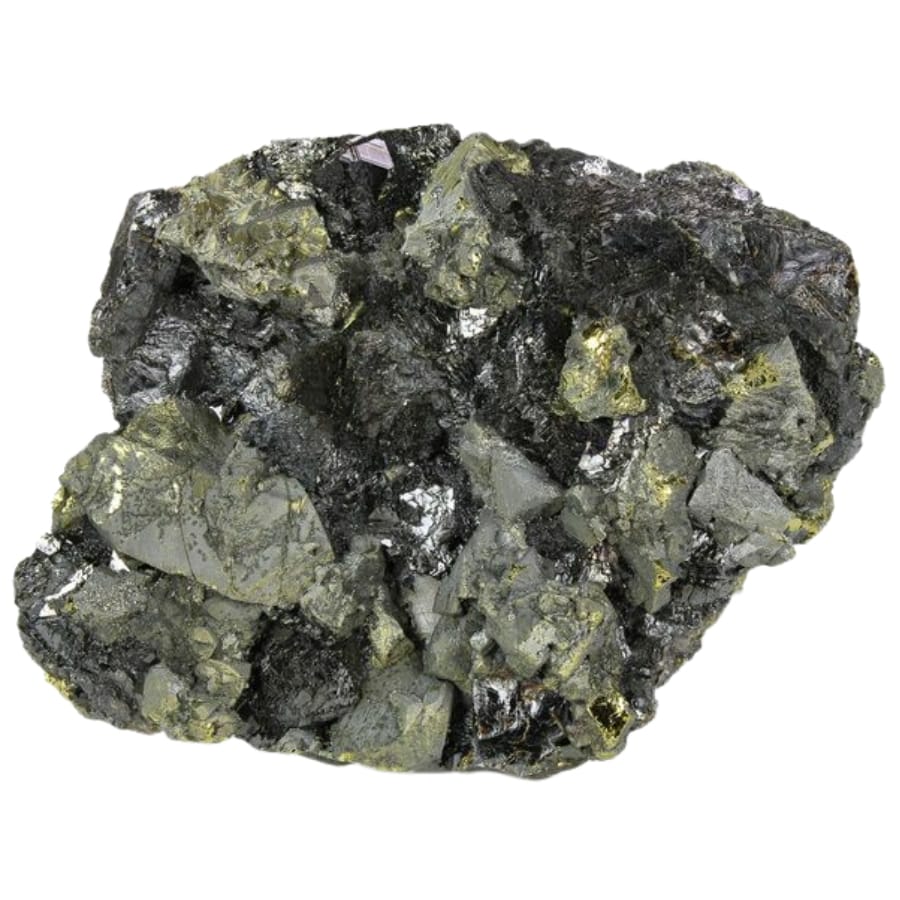
Chalcopyrite is a fascinating rock that can be found all over the world, even in Minnesota. It comprises copper, iron, and sulfur, which is what the name “copper iron sulfide mineral” means.
This mineral is easy to find because it is a unique golden-yellow color that makes it look like gold. It’s very fragile, and if you scratch it, it leaves a greenish-black mark.
This mineral is often found deep underground and can be made in several ways. It can grow where hot, mineral-rich water runs through cracks in rocks.
Chalcopyrite is valuable because it has a lot of copper in it. Copper is really helpful; it’s used in plumbing, wires, and even making coins. It’s very important for the mining business that chalcopyrite is one of the most common rocks that contains copper.
Where you can find Chalcopyrite in Minnesota
The state has a lot of chalcopyrite, especially in the Iron Range, with large iron ore deposits and other minerals.
Dolomite
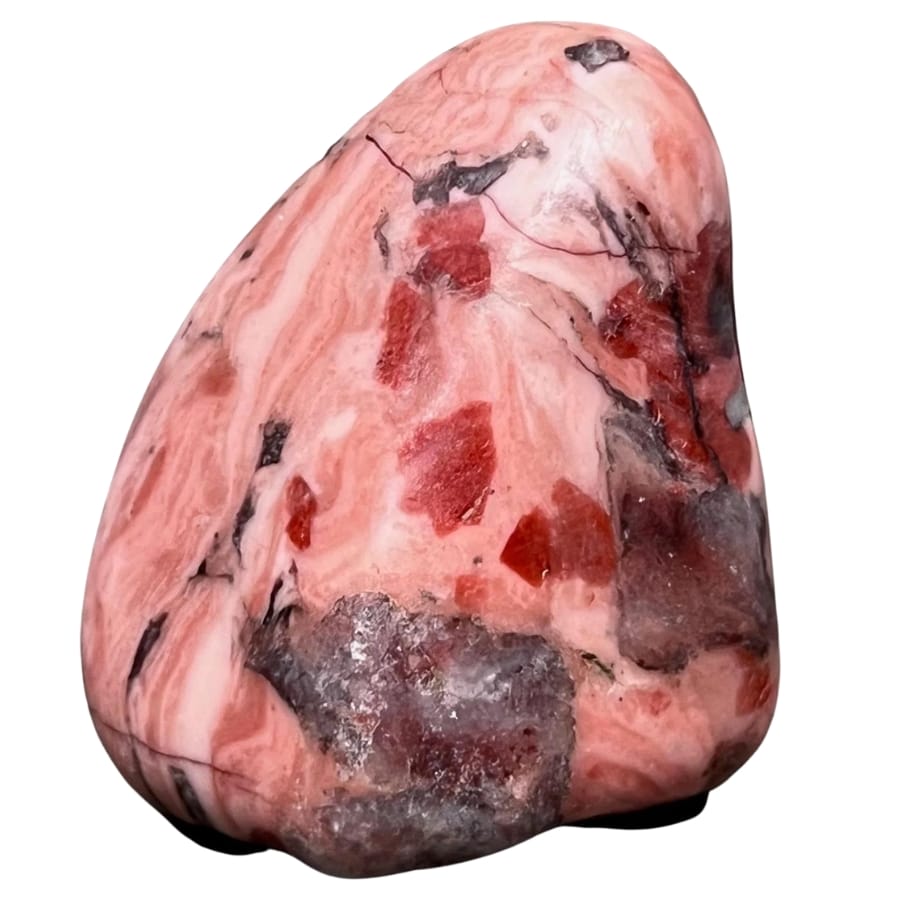
There are a lot of really cool minerals out there, but not many people know about dolomite. Even though it looks like limestone, it has an extra component: magnesium.
That’s what dolomite would be like if you mixed normal limestone with magnesium. It could be pink, green, or even brown, but most of the time it’s gray or white. The mineral can be found worldwide, including in Minnesota, mainly in the state’s southeast.
Most of the time, it starts out as rock that is lying around in the ocean. As water runs through the limestone over time, it takes in magnesium from the water and slowly changes into dolomite.
Several things make dolomite valuable. It’s used to make concrete and asphalt, which are important for making roads and homes. It’s also used in farming to make the land less acidic for planting.
Also, it’s suitable for countertops that need to last a long time because it’s stronger than limestone. Also, dolomite crystals are cool to add to your rock collection because they come in cool colors and sizes.
Now you know that dolomite is more than just a rock; it’s an important and cool part of our world.
Where you can find Dolomite in Minnesota
You can find dolomite in the following areas in Minnesota:
- Bronk Quarry
Feldspar
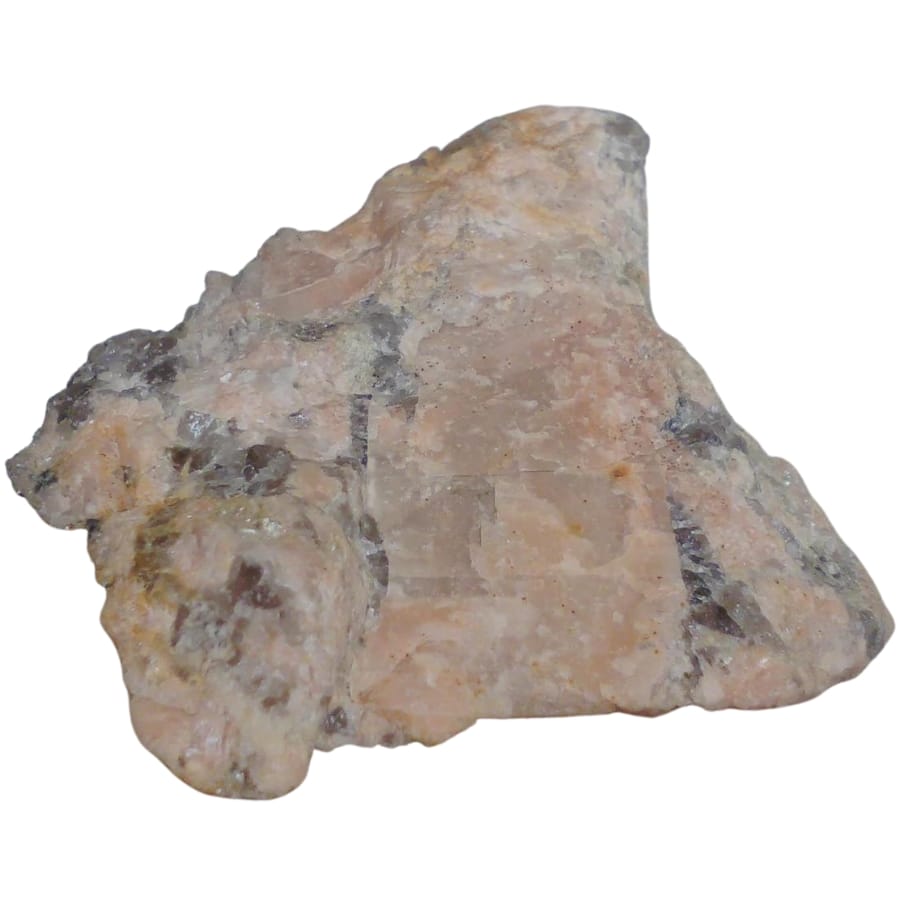
Feldspar is a very common mineral it’s the most common mineral in the crust of the Earth! One of these minerals is pink but can also be white, gray, or tan.
It’s one of a kind because it can take on many cool shapes and sometimes even shines in the sun. Several minerals make feldspar, and they all have some of the same qualities.
Feldspar is found all over Minnesota, but it’s most common in the central and northeastern parts of the state, where granite and other hard, volcanic rocks are common.
It’s mostly made deep inside the Earth when lava, molten rock, cools down. It sometimes comes together in big chunks and as part of rocks like granite or basalt.
Feldspar crystals can get bigger when the magma cools slowly below the Earth’s surface. Many of the state’s feldspar comes from these big granite rocks that formed millions of years ago.
There are many reasons why feldspar is worth a price. First, it’s used to make glass, which you see in windows and bottles. It makes the glass strong and easy to shape after it melts.
Clay items like plates and pots are also made with feldspar because it makes them strong and the glaze looks shiny. Some feldspar can be turned into a powder mixed with toothpaste to help clean your teeth.
Where you can find Feldspar in Minnesota
In Minnesota, feldspar can be found in several areas, particularly where granite and other igneous rocks are present.
Rhodochrosite
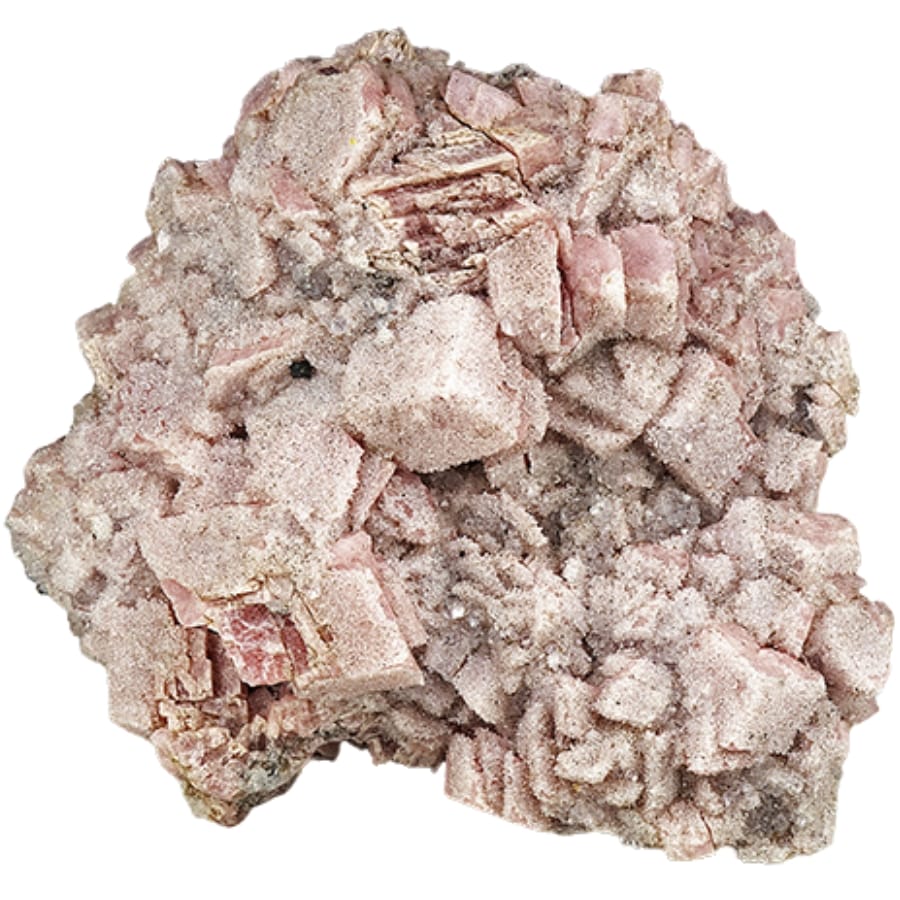
The beautiful pink and reddish colors of rhodochrosite make it stand out as an interesting crystal. Manganese carbonate is what gives it its pretty pink colors.
People love this material because it can form crystals and bands, which makes it a popular choice for collectors. It only shows up in a few places in the state, and when it does, it’s usually in small amounts mixed with other elements.
The process by which it forms is very interesting. Most of the time, it forms in mine veins or rock cracks where mineral-rich water runs.
It starts from the manganese-rich liquids as the water evaporates or cools down over time. The crystals’ unique shapes form because of these ingredients. It’s mostly found in places that are known for having a lot of different minerals, maybe with other minerals that contain manganese.
Where you can find Rhodochrosite in Minnesota
Minnesota has a lot of rhodochrosite in these places:
- Hopkins Mine
Amethyst

Your eyes will be drawn to the beautiful purple amethyst. Merely because it’s purple, amethyst stands out from other minerals that are made of quartz.
Stones like quartz contain small amounts of iron, which gives them a color range from light purple to deep violet. Which part is the best? You can find it in the northeast, especially near Lake Superior.
Many gem lovers like to visit this place because it has large, high-quality amethysts. It’s pretty interesting to see how it forms. It usually takes place deep underground, where hot water full of minerals runs through rock cracks.
This water cools down over millions of years, and the chemicals form crystals. With amethyst, the clear quartz changes into the beautiful purple stone we see when iron and the right amount of heat are present.
Most of the state’s amethyst layers were made a long time ago, when volcanoes were still ruling the area. The past of volcanoes made the ideal conditions for amethyst to form.
There are many reasons why people value amethyst. Gemstones like this are often used to make bracelets and rings because of their beautiful purple color.
Gemologists and people who like to collect it find it fascinating because each one can reveal something new about the history of the earth and the conditions that made it.
Where you can find Amethyst in Minnesota
These locations in the state are good places to look for them:
- Get Pickin
- Gooseberry Falls State Park
- West Central Rockhounds
Chalcedony

Although chalcedony is a type of quartz and is made of silicon dioxide, its shape is what makes it unique. As opposed to normal quartz, which is clear and solid, this one has very small crystals that make it look waxy and almost smooth.
Some types of chalcedony are brightly colored agates and milky white and blue colors. There are agates all over the state, but the ones with the deep red, orange, and white bands are especially common near Lake Superior.
Chalcedony is valuable for many reasons. It’s often used to make necklaces and earrings because it comes in a lot of pretty colors and shapes.
For geologists and rock collectors, it’s especially interesting when it comes in the form of agates. This is because each piece can tell you a lot about the geological past of the place where it was found.
Where you can find Chalcedony in Minnesota
There are many chalcedony specimens in the state, but these are the best places to find them:
- Cuyuna Range
- Osseo
- Portsmouth Mine
- Vermillion Range
Garnet

Garnet is made up of more than one element. While these minerals have similar crystal structures and traits, they come in various colors, from red to orange to purple. But when most people think of garnet, they picture a deep, rich red color.
Garnets are usually found in the northeastern state, often hidden in metamorphic rocks like schist and gneiss. These garnets aren’t typically the large, gem-quality stones you might find in a jewelry store, but they’re still elegant to look at and study.
There are several reasons why people value garnets. To begin with, they look lovely! People love to use deep red garnets to make jewelry like rings and chains. Also, garnets are the birthstones for January, so they make a great gift for people born that month.
Where you can find Garnet in Minnesota
Although you can find garnet all over Minnesota, most of them are found in the following places:
- Blanchard Dam
- Elk Creek
- Little Falls
Jasper

Because of its unique colors and patterns, jasper is a very cool rock that is a type of quartz. The different colors of jasper, including red, yellow, brown, and green, make it look like earth.
Unlike clear quartz, which you can see right through, jasper is opaque. Where the rocks are mixed with the quartz often determines the color.
Another exciting thing about jasper is how it forms. Water full of silica flows through rocks and dirt to start the process. The moving water picks up Small bits of minerals and leaves behind in cracks and holes in the ground over time.
These rock layers gradually change into jasper over time and under much pressure. For a very long time, people have valued jasper. It’s often used for jewelry and home art because of its pretty colors and patterns.
Where you can find Jasper in Minnesota
In Minnesota, you can find most of the jasper in these places:
- Acro Mine Lake
- Charles Lindbergh State Park
- Get Pickin
- Osseo
- Pigeon Point
Labradorite

The mineral labradorite is one of a kind and very attractive. It stands out because it can show an amazing play of colors. This is called labradorescence.
If the light hits the stone correctly, it can show blues, greens, oranges, and even reds. Imagine a rainbow stuck inside a rock!
If the right amount of sodium, calcium, silicon, and aluminum combine correctly, they can form labradorite. It can show those beautiful colors when light shines on it because of the unique way these elements are grouped.
There are several reasons why people value labradorite. Its beautiful colors make it a popular choice for jewelry and home art. When polished and shaped into necklaces or ornaments, it really stands out.
Where you can find Labradorite in Minnesota
Labradorite can be found all over Minnesota, but mostly in these spots:
- West Central Rockhounds
Marcasite

People often mix up marcasite with pyrite, which is also called “fool’s gold,” but they are not the same thing at all. Like pyrite, marcasite looks silvery and shiny but is lighter in color and usually has a pale brass-yellow tint.
It’s not the most common material in Minnesota, but marcasite can be found in some places, especially where there are limestone and shale deposits. It doesn’t usually form big, clear crystals. Instead, it forms smaller, less solid structures.
This mineral usually forms up in sedimentary rocks like shale and limestone. It’s made when iron sulfide reacts with other minerals in water. This process can happen in many places, like near the ocean floor or in places with hot springs.
There are several reasons why people like marcasite. First, it’s a nice material to collect because of its unique metallic sheen and crystal formations. In jewelry, it’s often cut and set into silver to give it an old-fashioned look.
Where you can find Marcasite in Minnesota
Marcasite is easy to find in these places:
- Bronk Quarry
Quartz

Quartz is one of the most common and well-known gemstones in the world. It comes in a lot of pretty cool shapes and colors. A more formal term for it is silicon dioxide, which is silicon and oxygen.
It can be clear and sparkly, or it can be different colors, like black (smoky quartz), pink (rose quartz), or even purple (amethyst).
It can form in many ways, but most of the time it does so when hot water full of minerals moves through cracks and spaces in rocks deep underground. The water is cooling down, and quartz is forming crystals in it.
Some places on Earth’s crust are cooler than the surface where this can happen, like near volcanoes. The crystals mixed in with the silicon dioxide as it forms can give quartz its different colors and features.
Quartz has been valued for a long time, and not just because it looks nice. Because it’s so pretty and unique, it’s used often in jewelry and home decor. But it’s also very important in technology.
It’s beneficial in electronics like watches and radios because it can change mechanical pressure into electricity and electricity into mechanical pressure.
Where you can find Quartz in Minnesota
You can find quartz in the following areas in the state:
- Charles Lindbergh State Park
- Gunflint Trail
- Vermillion Range
Amethyst

Your eyes will be drawn to the beautiful purple amethyst. Merely because it’s purple, amethyst stands out from other minerals that are made of quartz.
Stones like quartz contain small amounts of iron, which gives them a color range from light purple to deep violet. Which part is the best? You can find it in the northeast, especially near Lake Superior.
Many gem lovers like to visit this place because it has large, high-quality amethysts. It’s pretty interesting to see how it forms. It usually takes place deep underground, where hot water full of minerals runs through rock cracks.
This water cools down over millions of years, and the chemicals form crystals. With amethyst, the clear quartz changes into the beautiful purple stone we see when iron and the right amount of heat are present.
Most of the state’s amethyst layers were made a long time ago, when volcanoes were still ruling the area. The past of volcanoes made the ideal conditions for amethyst to form.
There are many reasons why people value amethyst. Gemstones like this are often used to make bracelets and rings because of their beautiful purple color.
Gemologists and people who like to collect it find it fascinating because each one can reveal something new about the history of the earth and the conditions that made it.
Where you can find Amethyst in Minnesota
These locations in the state are good places to look for them:
- Get Pickin
- Gooseberry Falls State Park
- West Central Rockhounds
Chalcedony

Although chalcedony is a type of quartz and is made of silicon dioxide, its shape is what makes it unique. As opposed to normal quartz, which is clear and solid, this one has very small crystals that make it look waxy and almost smooth.
Some types of chalcedony are brightly colored agates and milky white and blue colors. There are agates all over the state, but the ones with the deep red, orange, and white bands are especially common near Lake Superior.
Chalcedony is valuable for many reasons. It’s often used to make necklaces and earrings because it comes in a lot of pretty colors and shapes.
For geologists and rock collectors, it’s especially interesting when it comes in the form of agates. This is because each piece can tell you a lot about the geological past of the place where it was found.
Where you can find Chalcedony in Minnesota
There are many chalcedony specimens in the state, but these are the best places to find them:
- Cuyuna Range
- Osseo
- Portsmouth Mine
- Vermillion Range
Garnet

Garnet is made up of more than one element. While these minerals have similar crystal structures and traits, they come in various colors, from red to orange to purple. But when most people think of garnet, they picture a deep, rich red color.
Garnets are usually found in the northeastern state, often hidden in metamorphic rocks like schist and gneiss. These garnets aren’t typically the large, gem-quality stones you might find in a jewelry store, but they’re still elegant to look at and study.
There are several reasons why people value garnets. To begin with, they look lovely! People love to use deep red garnets to make jewelry like rings and chains. Also, garnets are the birthstones for January, so they make a great gift for people born that month.
Where you can find Garnet in Minnesota
Although you can find garnet all over Minnesota, most of them are found in the following places:
- Blanchard Dam
- Elk Creek
- Little Falls
Jasper

Because of its unique colors and patterns, jasper is a very cool rock that is a type of quartz. The different colors of jasper, including red, yellow, brown, and green, make it look like earth.
Unlike clear quartz, which you can see right through, jasper is opaque. Where the rocks are mixed with the quartz often determines the color.
Another exciting thing about jasper is how it forms. Water full of silica flows through rocks and dirt to start the process. The moving water picks up Small bits of minerals and leaves behind in cracks and holes in the ground over time.
These rock layers gradually change into jasper over time and under much pressure. For a very long time, people have valued jasper. It’s often used for jewelry and home art because of its pretty colors and patterns.
Where you can find Jasper in Minnesota
In Minnesota, you can find most of the jasper in these places:
- Acro Mine Lake
- Charles Lindbergh State Park
- Get Pickin
- Osseo
- Pigeon Point
Labradorite

The mineral labradorite is one of a kind and very attractive. It stands out because it can show an amazing play of colors. This is called labradorescence.
If the light hits the stone correctly, it can show blues, greens, oranges, and even reds. Imagine a rainbow stuck inside a rock!
If the right amount of sodium, calcium, silicon, and aluminum combine correctly, they can form labradorite. It can show those beautiful colors when light shines on it because of the unique way these elements are grouped.
There are several reasons why people value labradorite. Its beautiful colors make it a popular choice for jewelry and home art. When polished and shaped into necklaces or ornaments, it really stands out.
Where you can find Labradorite in Minnesota
Labradorite can be found all over Minnesota, but mostly in these spots:
- West Central Rockhounds
Marcasite

People often mix up marcasite with pyrite, which is also called “fool’s gold,” but they are not the same thing at all. Like pyrite, marcasite looks silvery and shiny but is lighter in color and usually has a pale brass-yellow tint.
It’s not the most common material in Minnesota, but marcasite can be found in some places, especially where there are limestone and shale deposits. It doesn’t usually form big, clear crystals. Instead, it forms smaller, less solid structures.
This mineral usually forms up in sedimentary rocks like shale and limestone. It’s made when iron sulfide reacts with other minerals in water. This process can happen in many places, like near the ocean floor or in places with hot springs.
There are several reasons why people like marcasite. First, it’s a nice material to collect because of its unique metallic sheen and crystal formations. In jewelry, it’s often cut and set into silver to give it an old-fashioned look.
Where you can find Marcasite in Minnesota
Marcasite is easy to find in these places:
- Bronk Quarry
Quartz

Quartz is one of the most common and well-known gemstones in the world. It comes in a lot of pretty cool shapes and colors. A more formal term for it is silicon dioxide, which is silicon and oxygen.
It can be clear and sparkly, or it can be different colors, like black (smoky quartz), pink (rose quartz), or even purple (amethyst).
It can form in many ways, but most of the time it does so when hot water full of minerals moves through cracks and spaces in rocks deep underground. The water is cooling down, and quartz is forming crystals in it.
Some places on Earth’s crust are cooler than the surface where this can happen, like near volcanoes. The crystals mixed in with the silicon dioxide as it forms can give quartz its different colors and features.
Quartz has been valued for a long time, and not just because it looks nice. Because it’s so pretty and unique, it’s used often in jewelry and home decor. But it’s also very important in technology.
It’s beneficial in electronics like watches and radios because it can change mechanical pressure into electricity and electricity into mechanical pressure.
Where you can find Quartz in Minnesota
You can find quartz in the following areas in the state:
- Charles Lindbergh State Park
- Gunflint Trail
- Vermillion Range
The Crystals Found In Minnesota
Crystals and gems lovers will find a lot of beautiful ones in Minnesota. People often talk about these rocks.
Additionally, you can read our piece about the spots in Minesota where you can find crystals:
Crystals and gems lovers will find a lot of beautiful ones in Minnesota. People often talk about these rocks.
Additionally, you can read our piece about the spots in Minesota where you can find crystals:
Fluorite

Fluorite is a cool mineral known for its beautiful, smooth crystals and wide range of colors. It comes in almost every color, from clear to blue to purple and green. It’s made up of calcium fluoride.
Deep below the Earth’s surface, it generally forms where hot, mineral-rich water flows through rock cracks. The water is starting to turn into fluorite crystals as it cools down.
Different rocks mixed with fluorite give it different colors. It can be purple with a small amount of iron, but it can also be blue, green, or even yellow with other elements.
Fluorite has always been interesting to people because it’s so pretty. When polished and cut into different shapes, it’s often used to make jewelry and home art.
In addition to being beautiful, fluorite is also very helpful. Many chemical products, including steel and hydrofluoric acid, are made with it.
Where you can find Fluorite in Minnesota
The following places in Minnesota are great places to find fluorite:
- West Central Rockhounds
Galena

Galena is a very interesting material that gives us lead. A very heavy item for its size, it has a shiny, glossy gray color that is very different from other things. It makes crystals that look like cubes and can look really cool and geometric.
It’s formed in a process that takes place deep underground. Most of the time, it forms in sedimentary rocks like limestone or in volcanic rocks where hot water flows through channels.
Galena typically gets its lead from other minerals breaking down in the rock around it. These minerals are then mixed into the galena as it forms.
It has been valuable for a long time because they contain much lead. Many things, like batteries, bullets, and even paint and gasoline used to contain lead.
But now that we know it can be dangerous, we don’t use lead for these things as much. In addition to its useful properties, galena is a favorite among mineral fans because of its cool crystal shapes and metallic shine.
Where you can find Galena in Minnesota
Galena can be found in the southeastern part of Minnesota, especially where there are limestone rocks.
Hematite

Hematite is a cool material that is very important: it’s one of the main places where iron comes from. The glossy shine is very unique, and the colors range from steel gray to almost black.
It can even be a little red, which is how it got its name: hematite comes from the Greek word for blood.
Hematite can form in many ways, but most of it is made when iron in water turns into minerals. It can form when iron minerals from the Earth’s surface dissolve in still water, like lakes and seas. The iron minerals then mix with oxygen and form crystals.
Hematite is valuable, mostly because it contains iron. Everything from building steel and car steel to everyday things like tools and machines needs iron.
But hematite is valued for more than just its usefulness. It’s often used in jewelry and as a paint color. It was even used to make red ochre, used in art and decoration.
Where you can find Hematite in Minnesota
Hematite is very special in Minnesota because the state has some of the biggest iron reserves in the US.
Hematite is found in large amounts in these layers, especially in the Iron Range area in northeastern Minnesota. This makes the area historically important for iron mining.
Pyrite

A mineral called pyrite, which is often called “fool’s gold,” is known for making people think it’s real gold without being real. Since it’s bright and shiny, it’s actually iron sulfide.
Iron and sulfur generally combine in certain rocks, like sedimentary rocks (like shale) or igneous rocks (like granite). Such factors might include high pressure or the presence of other elements and minerals.
Surprisingly, pyrite can form when bacteria in water or dirt use sulfur in their processes. From deep underground to the bottoms of lakes and seas, this process can happen anywhere.
Different people have different reasons for wanting pyrite. Actually, it’s not real gold, but it’s still pretty cool. Being shiny and silvery, it’s used in jewelry and as a decoration stone.
A fascinating fact is that pyrite can be used to make sulfur and sulfuric acid, which are essential for many commercial processes. That’s why, even though it’s called “fool’s gold,” pyrite is extremely useful and significant.
Where you can find Pyrite in Minnesota
You can find pyrite in these locations:
- Bronk Quarry
- Carlton County
- Pigeon Point
- Quarry Hill Nature Center
Lake Superior Agate
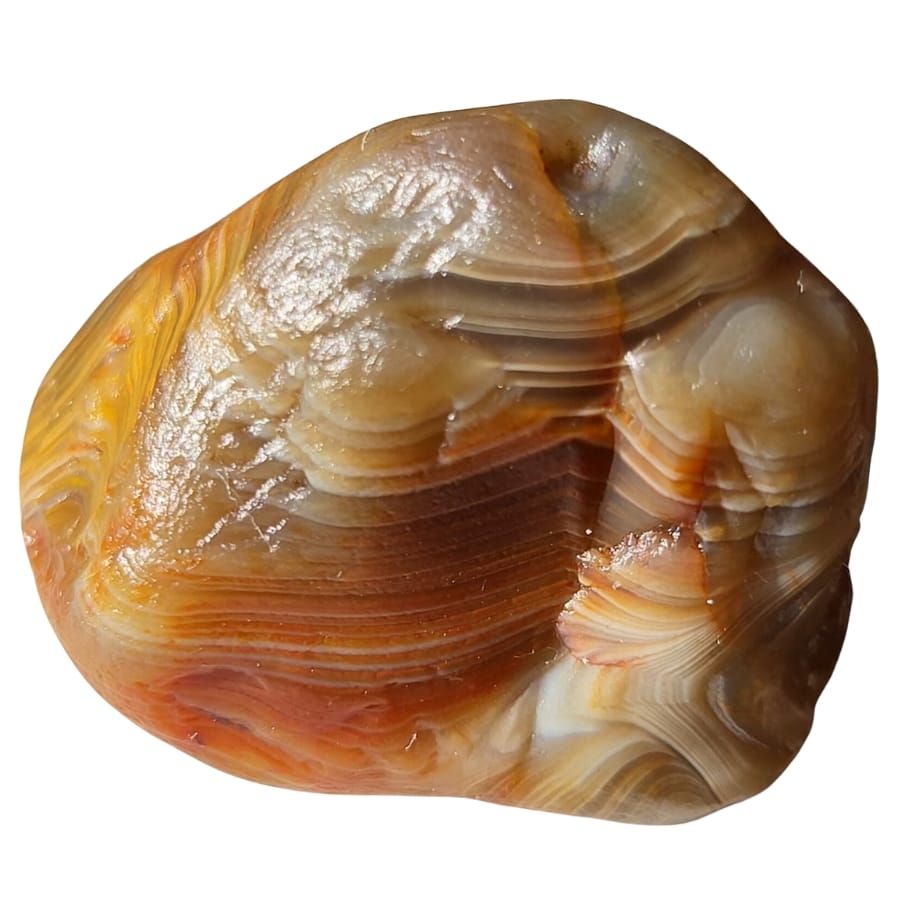
The Lake Superior agate is a unique rock that is well-known in Minnesota. In fact, it’s the state jewel! The patterns and colors on these agates are really cool. They can have flowing patterns in red, orange, yellow, and even black.
Their name comes from the fact that most of them live near Lake Superior, which is the largest of the Great Lakes. In reality, these agates are a type of quartz. They were made more than a billion years ago, which is really old!
Several things make people love agates from Lake Superior. To begin, they look lovely. When the agates are cut and polished, the shapes and colors can look really beautiful.
For jewelry and home art, they’re used. It can also be fun for rock hunters to try to find a Lake Superior agate. For some reason, they look like natural jewels that are hidden around Lake Superior.
Where you can find Lake Superior Agate in Minnesota
You can find the Lake Superior Agate in these locations in the state:
- Beaver Bay
- Lake Superior beaches
- Little Falls
- Moose Lake
- Pigeon Point
Staurolite
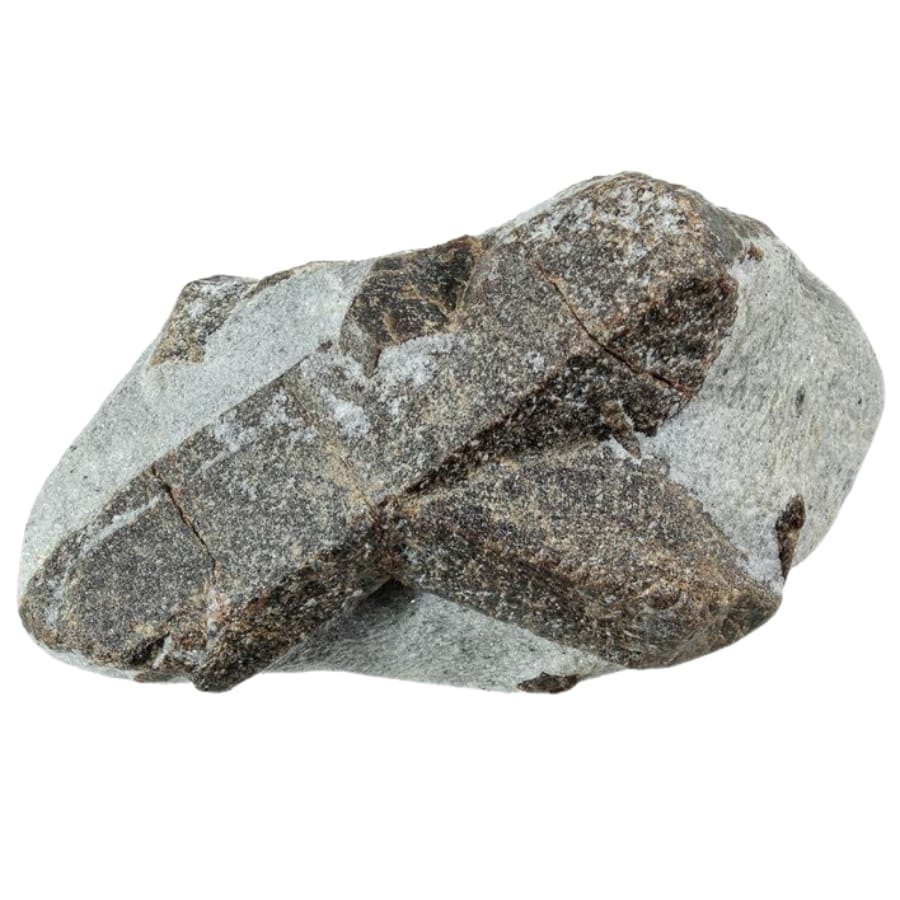
Staurolite is a one-of-a-kind mineral that is very interesting. It has its own place in the world of rocks and minerals. People have been interested in its cross-shaped gems for hundreds of years.
These crosses can form at either a 90-degree angle or a 60-degree angle, making shapes that look a lot like the X shape or the Christian cross.
Metamorphic rocks are usually where you can find it. These are rocks that have been changed by very high temperatures and pressures deep inside the Earth.
When rocks like shale that are high in clay are put through these harsh conditions, staurolite is formed.
The process changes the rock that was there before and makes new minerals, such as staurolite. The cross shape is unique and comes from the way staurolite crystals grow in these settings.
Several things make staurolite valuable. To begin, its cross-shaped diamonds are very cool and unique. Good luck charms or amulets have been made from these crosses for a very long time.
They aren’t as shiny or brightly colored as some other minerals, but their unique shape makes them stand out among rocks and minerals.
Where you can find Staurolite in Minnesota
You can find staurolite specimens in these places:
- Blanchard Dam
- Charles Lindbergh State Park
- Elk Creek
- Little Falls
Thomsonite

An interesting crystal called thomsonite can be found in Minnesota near Lake Superior. It’s a zeolite, which is a type of mineral known for the unique way it holds water in its crystal structure.
Its beautiful range of colors, from white to pink, green, and even orange, makes it stand out. It’s a real gem for rock lovers because of these colors. These rocks are actually pieces of old lava flows!
Numerous reasons make thomsonite valuable. The first thing is how beautiful it is. When it’s polished, the shapes and colors can look spectacular. It’s frequently used in jewelry items such as bracelets and earrings.
Where you can find Thomsonite
You can find round, smooth thomsonite rocks in Minnesota, especially on the North Shore of Lake Superior. Other areas you can find it in the state are:
- Gooseberry Falls State Park
- Little Marais River
- Thomsonite Beach
Our Favorite Places For Gem Mining in Minnesota
Although there are many beautiful choices, we picked the top five fantastic locations to dig for gems in Minnesota. Here are the spots where adults and more experienced gem hunters can do real gem mining and recommended places where kids can start learning about gem hunting.
Always Confirm Access and Collection Rules!
Before heading out to any of the locations on our list you need to confirm access requirements and collection rules for both public and private locations directly with the location. We haven’t personally verified every location and the access requirements and collection rules often change without notice.
Many of the locations we mention will not allow collecting but are still great places for those who love to find beautiful rocks and minerals in the wild without keeping them. We also can’t guarantee you will find anything in these locations since they are constantly changing.
Always get updated information directly from the source ahead of time to ensure responsible rockhounding. If you want even more current options it’s always a good idea to contact local rock and mineral clubs and groups
Quarry Hill Nature Center
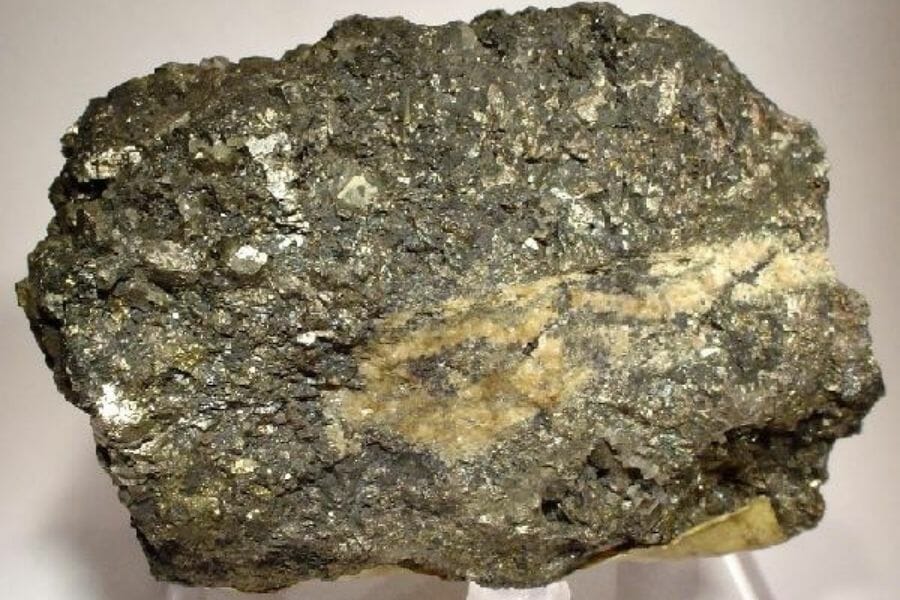
701 Silver Creek Rd NE, Rochester, MN 55906, United States
Quarry Hill Nature Center is a 300-acre park and nature preserve. The park contains several miles of trails where visitors can explore and learn about the local ecology and geology of the area.
Visitors to this center can search for gems and minerals by sifting through dirt and gravel from a local quarry. It’s an experience that will stay with you long after you leave Quarry Hill Nature Center!
The Types of Gems Found At Quarry Hill Nature Center
Visitors can discover a variety of gems here, including:
- Calcite
- Hematite
- Jasper
- Lake Superior Agates
- Pyrite
The Best Time To Visit Quarry Hill Nature Center
The best time to visit is during the spring or summer months. This is when the weather is milder and more conducive to outdoor activities such as gem mining.
If you want REAL results finding incredible rocks and minerals you need one of these 👇👇👇
Finding the coolest rocks in isn’t luck, it's knowing what to look for. Thousands of your fellow rock hunters are already carrying Rock Chasing field guides. Maybe it's time you joined the community.
Lightweight, mud-proof, and packed with clear photos, it’s become the go-to tool for anyone interested discovering what’s hidden under our red dirt and what they've already found.
Join them, and make your next rockhounding trip actually pay off.
What makes it different:
- 📍 Find and identify 140 incredible crystals, rocks, gemstones, minerals, and geodes across the USA
- 🚙 Field-tested across America's rivers, ranchlands, mountains, and roadcuts
- 📘 Heavy duty laminated pages resist dust, sweat, and water
- 🧠 Zero fluff — just clear visuals and straight-to-the-point info
- ⭐ Rated 4.8★ by real collectors who actually use it in the field
Bronk Quarry and Mill
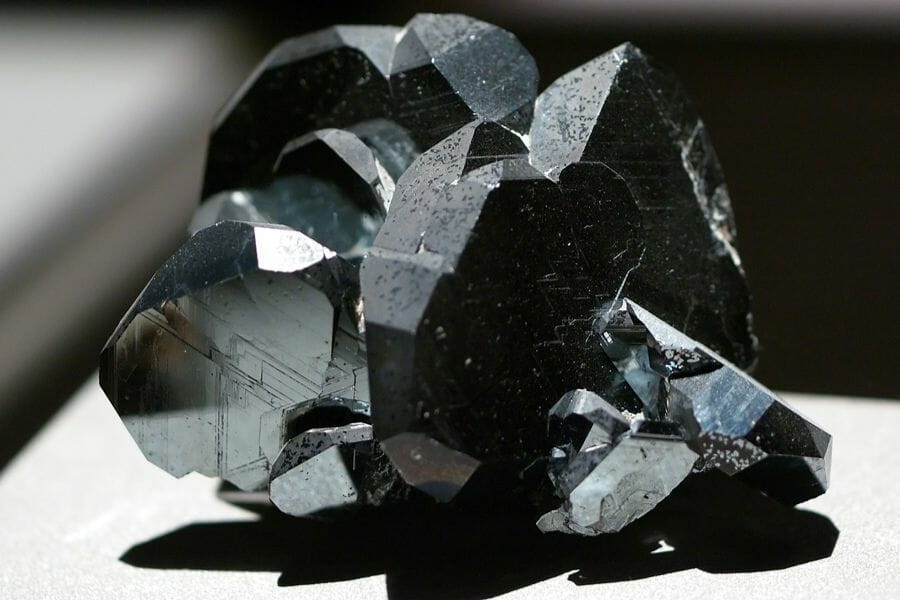
Winona Co., Minnesota, United States
Bronk Quarry and Mill is a limestone quarry situated on the beautiful north shore of Lake Superior. Gem hunters can explore the mine by taking a guided tour or renting a self-guided kit with safety equipment and tools for collecting stones. The mill offers various services, such as cutting, polishing, and setting gems into jewelry or other items.
The Bronk Quarry was opened in 1857 by John Bronk, a local entrepreneur who recognized the value of limestone for use in building construction. Today, you can explore both Bronk Quarry and Mill sections, including the quarry, mill, and the grounds surrounding the site. You can even explore this area to find amazing Minnesota crystals.
The Types Of Gems Found At Bronk Quarry and Mill
There are numerous kinds of gems and other items to discover like:
- Calcite
- Dolomite
- Hematite
- Marcasite
- Pyrite
The Best Time To Visit Bronk Quarry and Mill
The best time to visit this location is during the summer months of June through August. During this time, the quarry and mill are open to gem miners who can take advantage of gem mining, guided tours, and available educational programs.
Thomsonite Beach
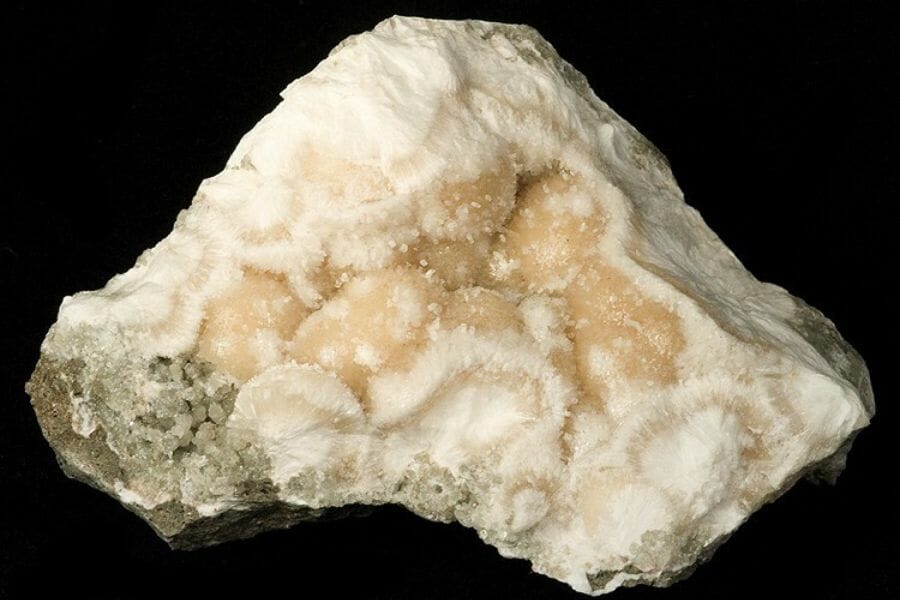
Grand Marais, Cook Co., Minnesota, United States
Thomsonite Beach is known for its unique and beautiful pebbles, which are made of a type of rock called thomsonite. It is popular with beachgoers and rock collectors alike who come to search for these unique stones. The pebbles range in color from white to pink to yellow and red.
The Types Of Gems Found At Thomsonite Beach
Most gems found here are Thomsonites, as the beach’s name suggests. You can also discover Agates in this area.
The Best Time To Visit Thomsonite Beach
The best time to visit Thomsonite Beach is from May to September. The water temperature is at its warmest between June and August, making it an excellent time for swimming and searching for gems. It’s also important to note that the beach can be rocky and slippery, so wearing appropriate shoes is necessary.
West Central Rockhounds – Great for kids

1605 1st St S Suite D10, Willmar, MN 56201, United States
West Central Rockhounds is a family-owned and operated business specializing in rocks, minerals, fossils, gemstones, and lapidary supplies. The shop carries a wide selection of gems from around the world and locally sourced items. They also offer classes and workshops on geology and jewelry making. This is a great place to find unique gifts or to learn more about rocks and minerals.
Types Of Gems Found At West Central Rockhounds
- Agates
- Amethyst
- Calcite
- Fluorite
- Garnet
- Jasper
- Labradorite
- Opal
- Quartz
- Tourmaline
The Best Time To Visit West Central Rockhounds
The best time to visit is during the summer months. The shop is open from Fridays to Mondays and offers various geologic specimens, lapidary equipment, and educational materials for rockhounds of all ages.
Get Pickin – Great for kids
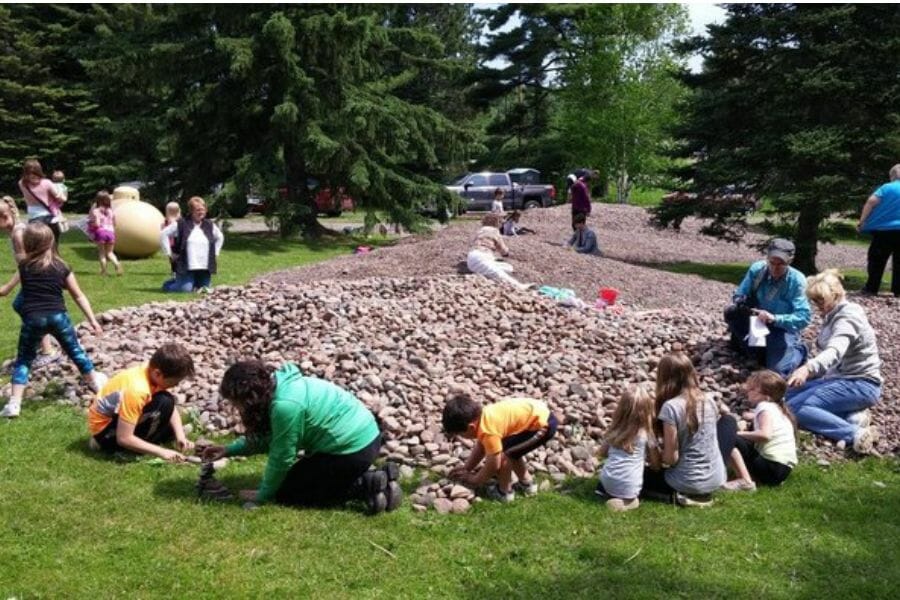
N, 3749 Minnesota 33, Cloquet, MN 55720, United States
Get Pickin is an exciting and unique experience for anyone exploring the state’s beauty. Gem hunters have a chance to mine for a variety of gems and minerals. You can purchase a bucket of ore with gems such as quartz, amethyst, jasper, agate, and more. Once you have purchased your bucket, you can use the tools provided to sift through the ore and find your gems. After finding your gems, you can take them home with you as a souvenir or get them cut and polished into jewelry. This location is a great way to explore the outdoors while learning about geology and having fun!
Types Of Gems Found At Get Pickin
Visitors can discover some gems, such as:
- Amethyst
- Jasper
- Lake Superior Agates
- Quartz
The Best Time To Visit Get Pickin
The best time to visit this location is from May through September. The gem mining season runs from late April through early October, so you can take advantage of the warmer months to enjoy all that this unique experience has to offer.
Other Great Options For Real Gem Mining in Minnesota
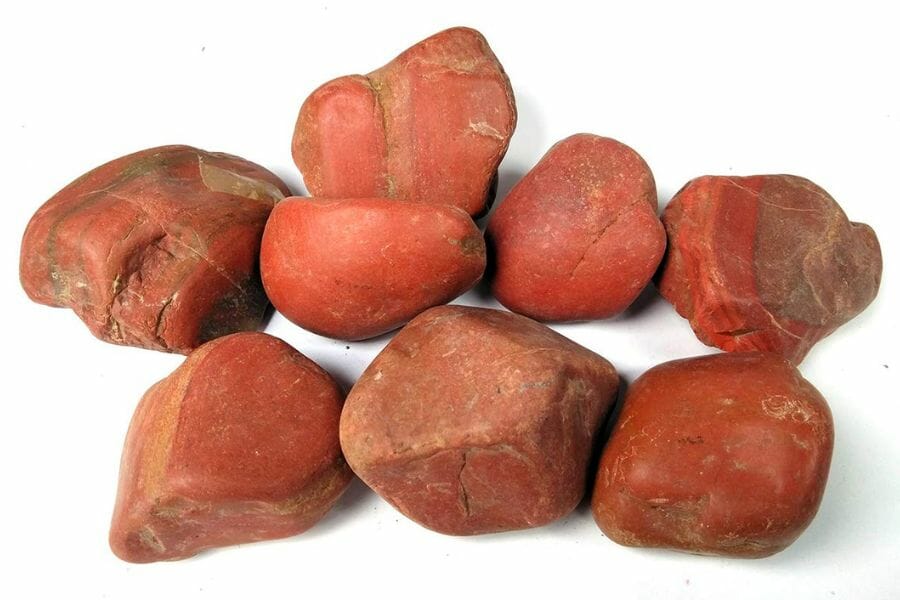
After you’ve had a chance to visit the locations we previously highlighted, there are many more exceptional places to do real gem mining in Minnesota. Below, we have enumerated locations where you can find more gems; these sites are primarily for folks who have a lot of experience mining for gems and wish to look for more active mines.
- Acro Mine Lake – Agates, Jasper
- Brighton Beach – Agates
- Charles A. Lindbergh State Park – Staurolites
- Gull Rock – Agates
- Gunflint Trail – Quartz
- Kelsey Beach – Agates
- Mary Ellen Iron Mine – Jasper
- Moose Lake State Park – Agates
- Portsmouth Mine – Agates, Chalcedony
The Top Public Gem Mining Locations in Minnesota
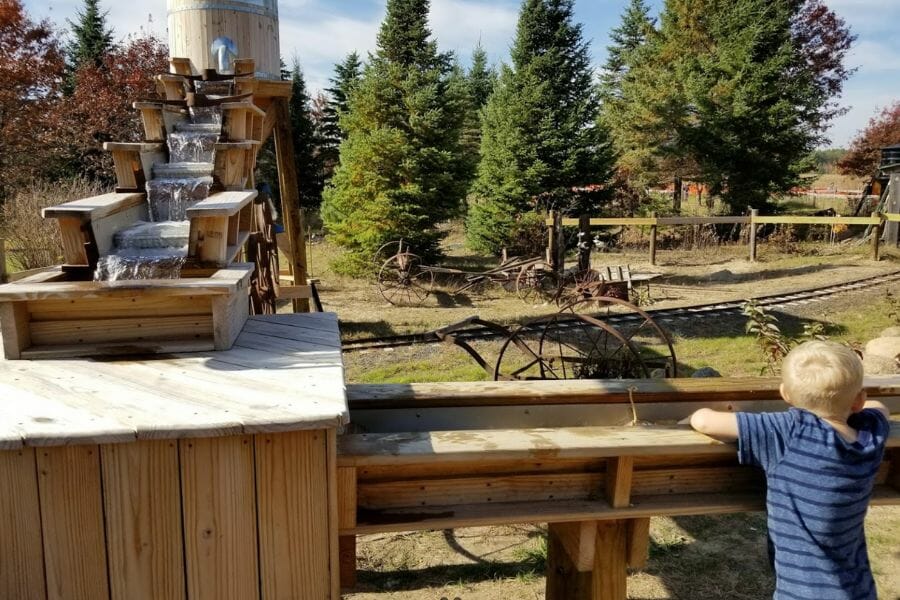
There are several options if you’re looking for more family-friendly locations or a means to experience gem mining firsthand. The best public gem mining in Minnesota for kids and families is listed below. Although these are not traditional mining locations, they provide excellent insight and a practical approach to learning about gems and minerals.
- Pinehaven Farm – 28186 Kettle River Blvd, Wyoming, MN 5509, United States
Minnesota Gem Mining Laws And Regulations
The Minnesota Department of Natural Resources (DNR) regulates recreational gem hunting in the state. While gem hunting is allowed on public lands and designated areas of state parks and forests, specific regulations must be followed, including collecting limits, equipment requirements, and a ban on explosives.
The total amount of gems collected per day cannot exceed 1 quart, and the total amount collected per year cannot exceed 1 gallon. Metal detectors are not allowed when gem hunting, but a shovel and a bucket or container with a lid are required. Explosives are also not allowed for any purpose while gem hunting in Minnesota.
It is illegal to search for gems in streambeds, quarries, archaeological sites, historic sites, cemeteries, and private properties.
To learn more about the state’s laws and regulations, visit the Minnesota Department of Natural Resources (DNR) link above.
Additional places to mine for gems in nearby states
When you’re done exploring each location on the list above, you can make use of the guides we’ve created below to find more gems in neighboring states:
If you have any recommendations we haven’t covered, please leave them in the comments below!

